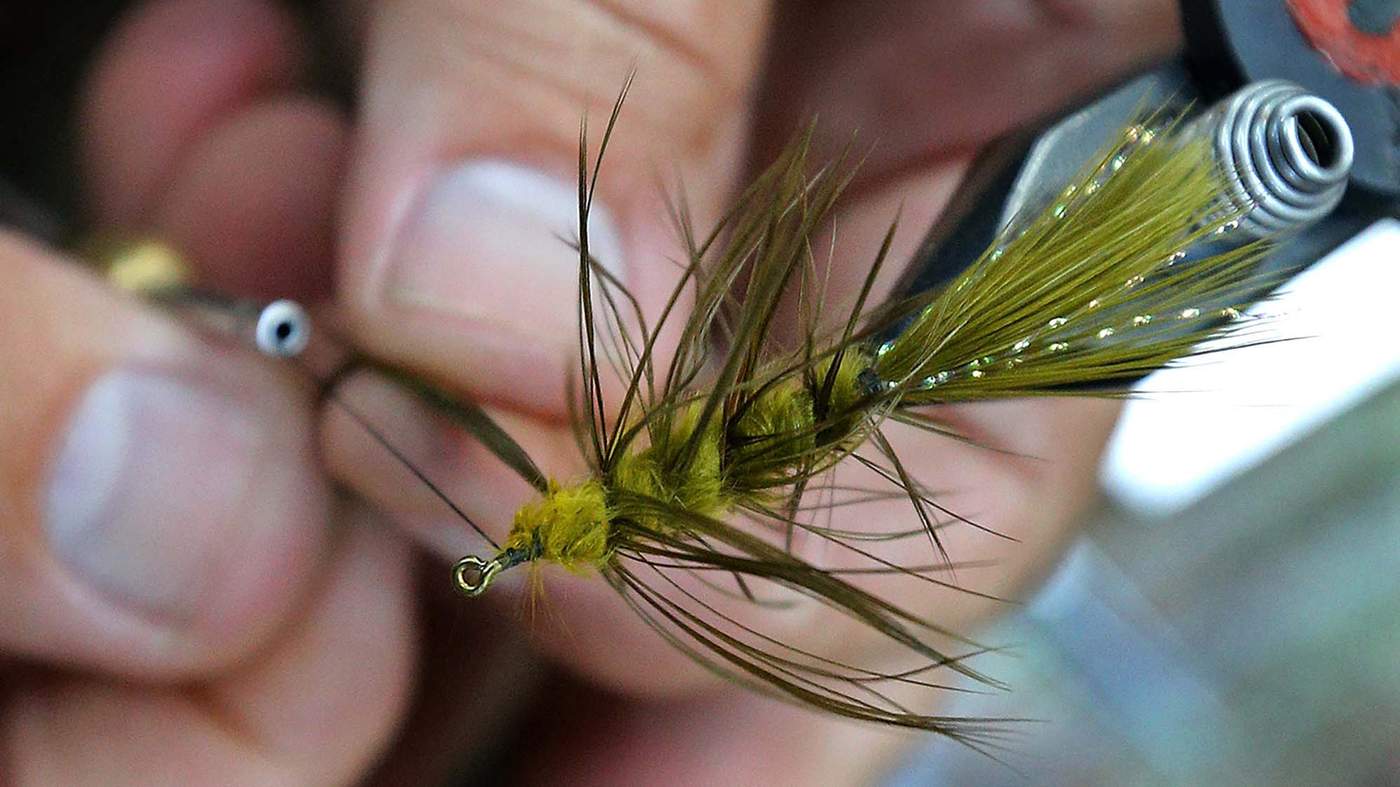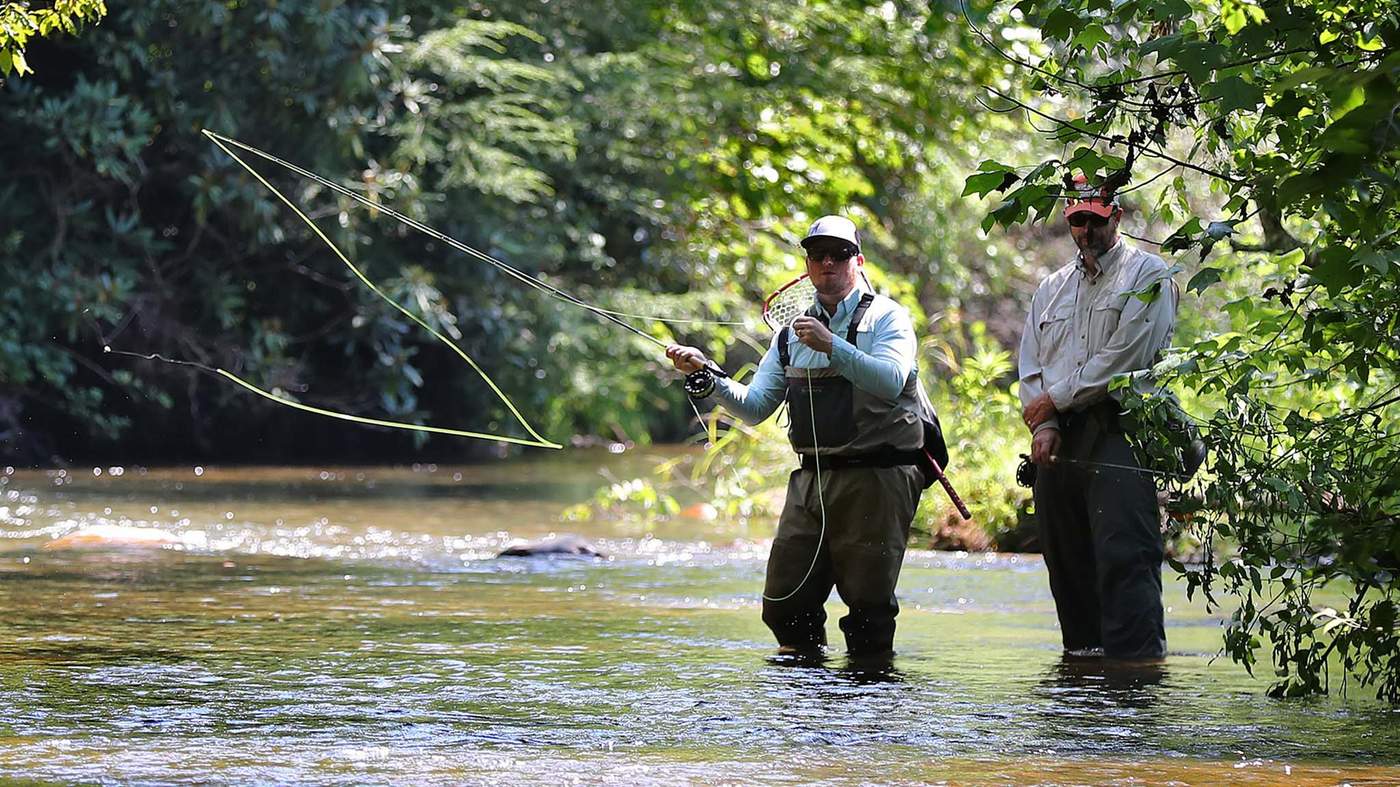Twilight is descending on tiny Rock Creek Lake, a pond in the hills above Suches.
Pink light hovers in the trees. The crickets trill. Barking frogs send up a serenade that sounds like a smoker’s cough.
This mild North Georgia mountain evening should be a perfect night for fly fishing. And we’re in a good place. Rock Creek Lake, in the middle of the Chattahoochee National Forest, is warm on the surface, but a few feet down it’s chilly. Twenty feet down it’s cold as hell.
“You can float on your back here,” says our guide, Louis Cahill, “and if you let your legs dangle down, they’ll freeze right off.”
Trout, who have no legs, like it cold. So the trout are here.
The two commence taking turns, relentlessly dropping flies just in front of some 26-inch beauties, some of whom they recognize from year to year.
Cahill can’t help but offer color commentary as Pickett fights with a that he’s just hooked: “Sweet talk it. Sweet talk it. There it is!” And, as the creature escapes, “Oh man. Seriously? Uh, heartbreaking.” Cahill and Pickett have the accuracy of Spiderman, zinging their webs directly at their targets. But these fish are wise. Though their brains are the size of a garden pea, these fish know how not to get caught.
Until they get caught. “Look at that,” says Cahill, as he nets a rainbow trout whose iridescent colors seem to move and pulse like the pixels on a Jumbotron. “That’s what a wild fish looks like.”
Then Cahill gently puts the finned monster back in the water and it torpedoes away, to fight another day.






Please confirm the information below before signing in.